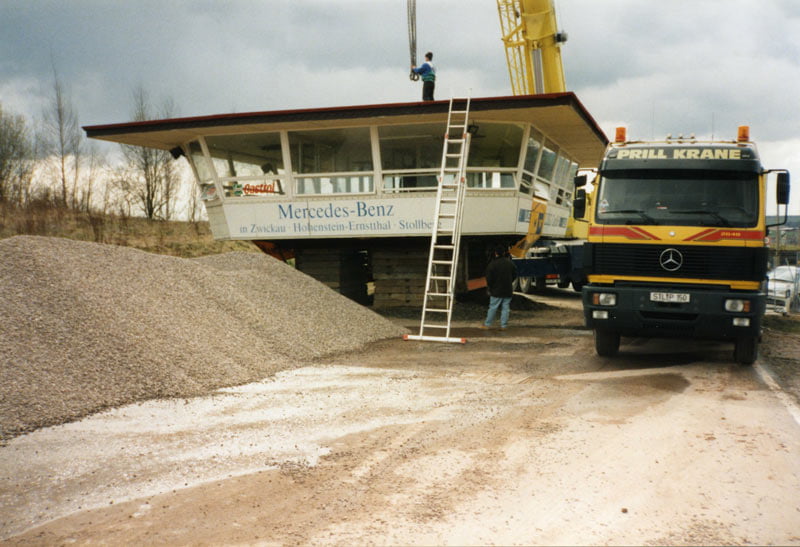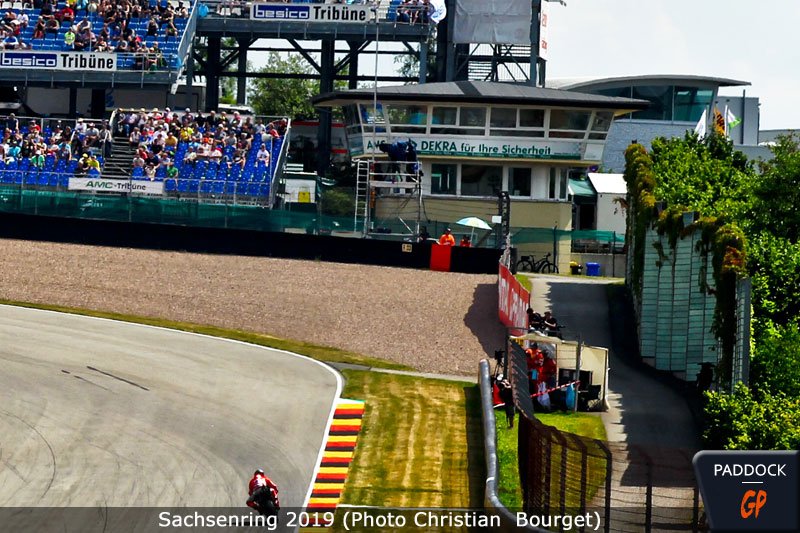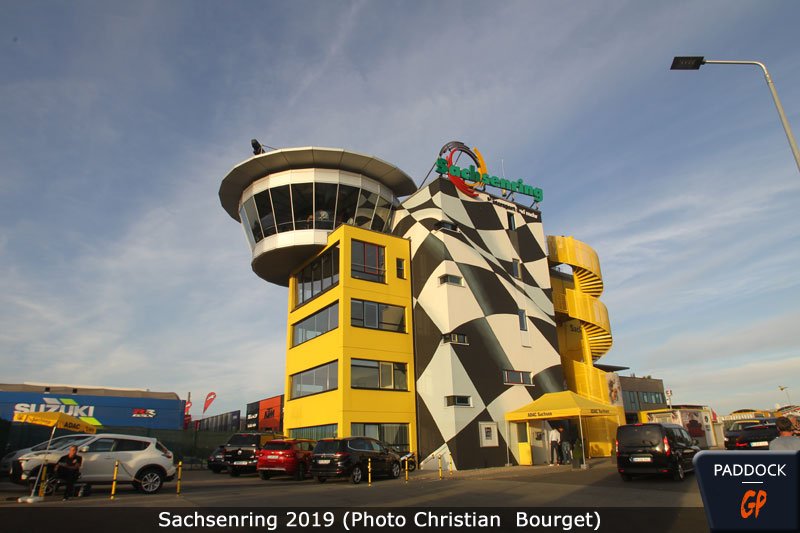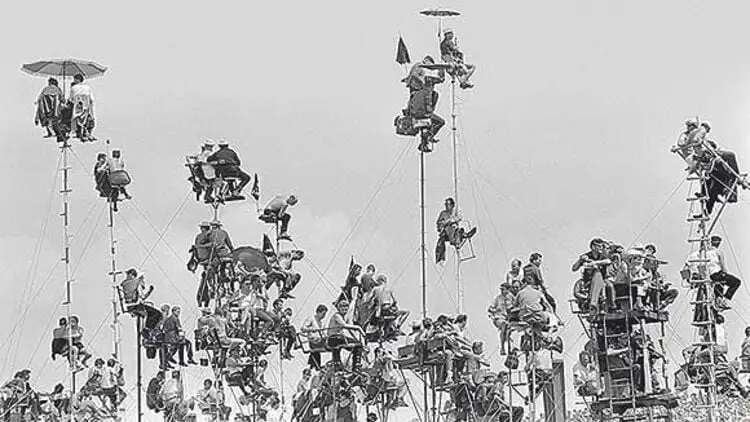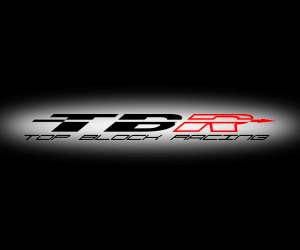Very often, we find the beginnings of a permanent circuit in road races banned due to fatal accidents. That of Sachsenring, in Germany, is no exception to this rule…
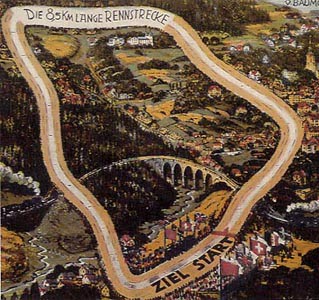
It all started on May 26, 1927 when a motorcycle race called Badberg Viereck rennen (Badberg rectangle race) was organized in Hohenstein – Ernstthal, near Chemnitz in Saxony. The roughly rectangular 8,731 kilometer route, on the site of the current circuit, offered a bit of everything: straight lines, fast curves, passage between houses, tight hairpins, all in a hilly and green landscape.
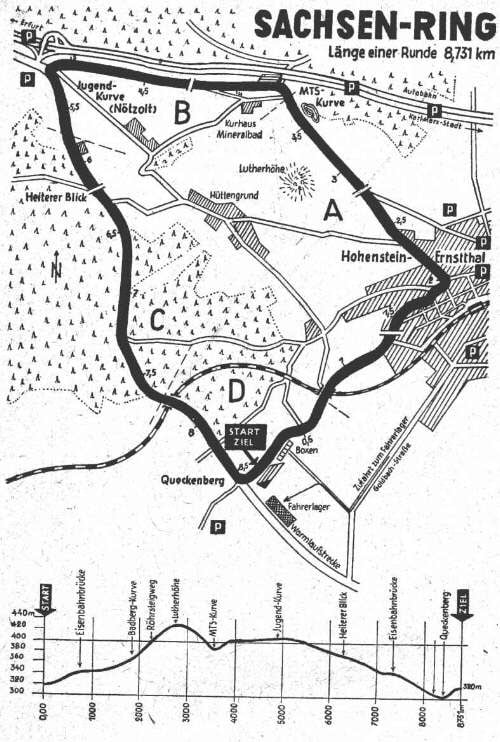
It was a huge success with more than 140 spectators lining the course and the 000 edition was no less popular. However, it proved to be exceptionally dangerous, with no fewer than 1928 falls along its route, leading local authorities to end the competition.
It was not until 1934 that racing resumed, this time hosting the prestigious European Motorcycle Grand Prix in 1936. Unfortunately, the dangers were still present and three riders were killed, including the 1933 European champion. Gunnar Kalén and the 1934 champion Pol Demeuter. But this time the event has taken on a national scale and is no longer banned.
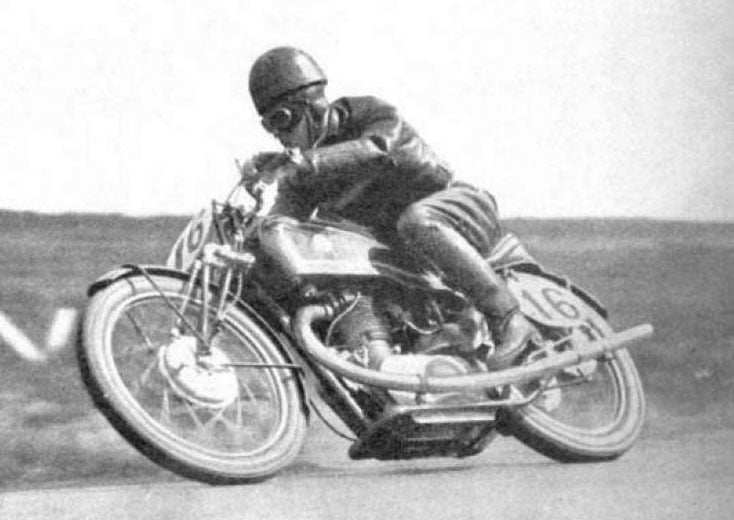 Pol Demeuter
Pol Demeuter
In 1937, following the closure of the Grillenburger Dreieck route in the Tharandter forest, the Hohenstein-Ernstthal road route recovers the name of
Sachsenring.
The Scottish Jimmie Guthrie, winner of the “European Grand Prix” in 1935 and 36, killed himself but his success continued and, three years later, only the war could put an end to the competitions, such was the popular enthusiasm (and propaganda) were there so far…
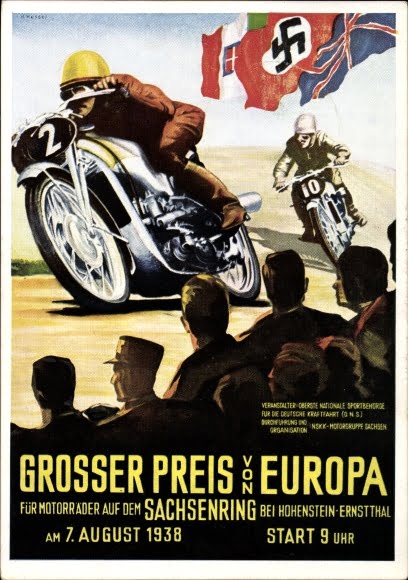
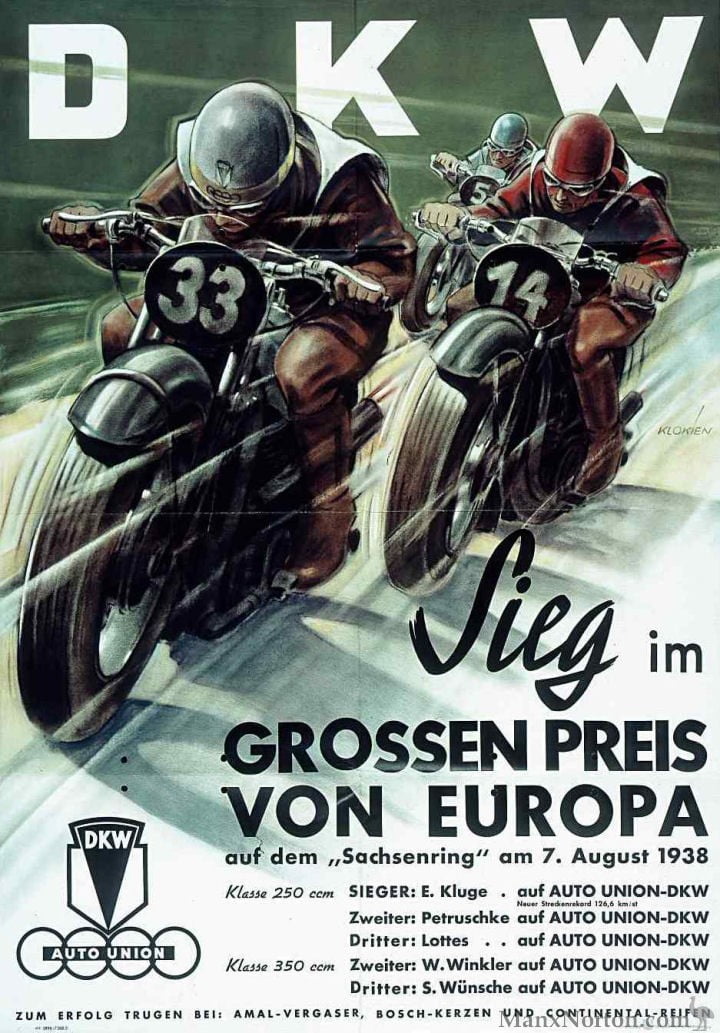
Once peace had returned to a region which had now come under Russian supervision, the races resumed with increased fervor in 1949, the 1950 edition of the German championship even constituting a peak with 480 visitors on Sunday alone! Did you say “popular fervor”?
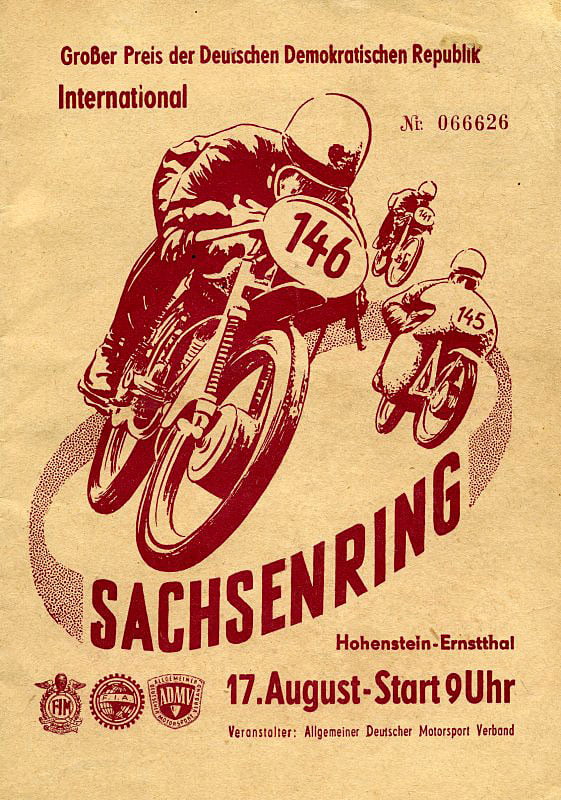
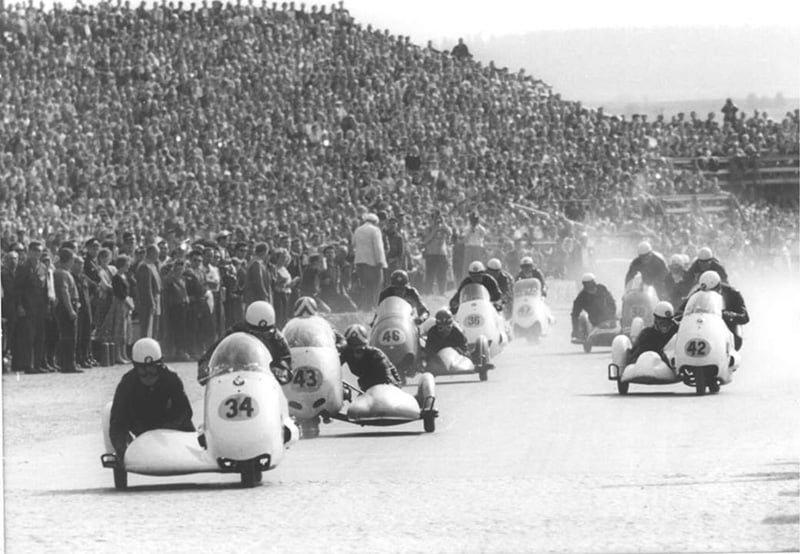 Photo: FIM/Maurice Büla
Photo: FIM/Maurice Büla
The sixties did not deny this success, on the contrary, spectators were always fascinated by the performances of the local productions of Zschopau, the MZ with 2-stroke engines of the wizard Walter Kaden led among others by Ernst Degner until 1961, before the latter passes west of the Iron Curtain bringing Suzuki the secrets of East German technology...
From this date, the Grand Prix of the Democratic Republic of Germany becomes a motorcycle world championship event and the world stars of motorcycle racing all make an annual visit to Saxony, such as Mike Hailwood, Giacomo Agostini, Dieter Braun and Angel Nieto... but more Ernst Degner, eagerly awaited by the Stasi!
Here, in 1963, the invincible Suzuki armada in 125 (which even “stole” the original colors of MZ, blue and silver), with from left to right Hugh Anderson, Frank Perris and the Austrian Bert Schneider. On the far right, MZ #143 of László Szabó, then behind #144 of Werner Musiol and #150 of Dieter Krumholz.
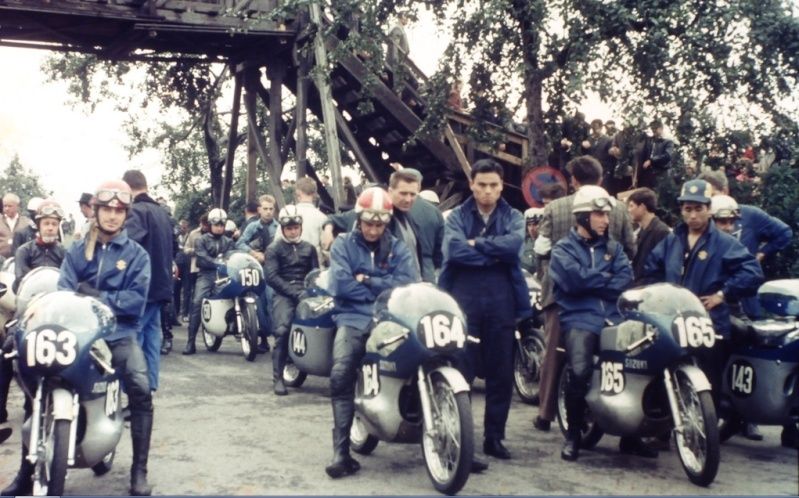
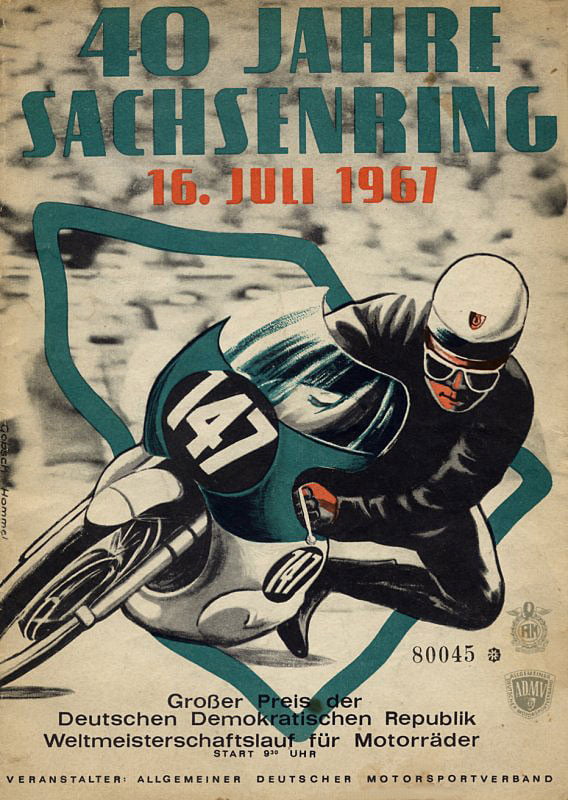
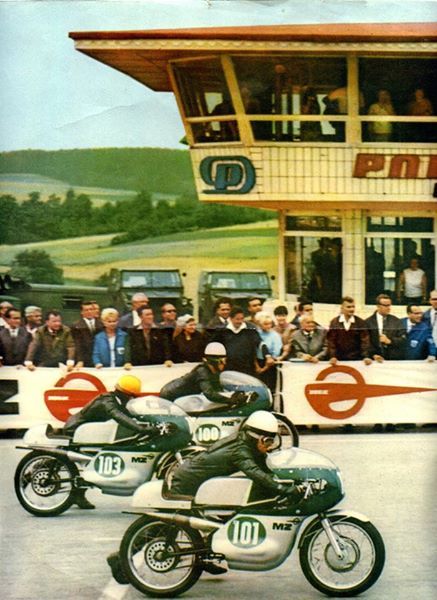
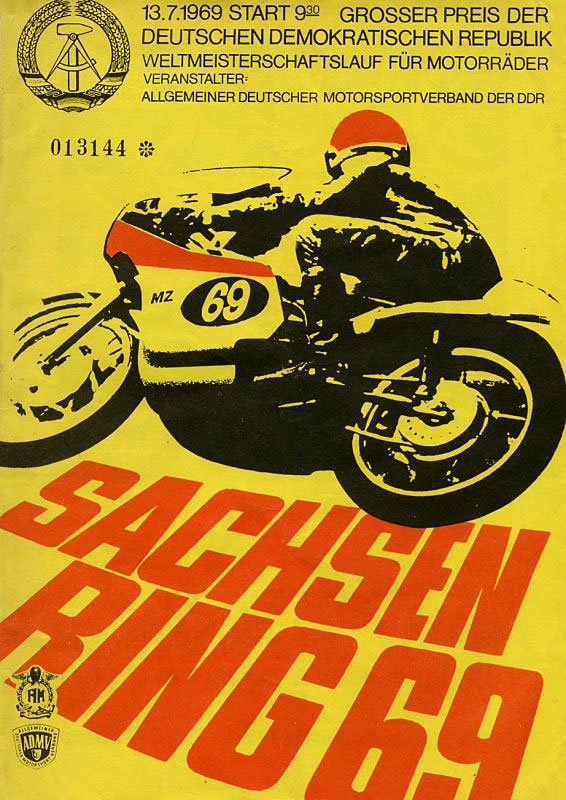
Another crowd pleaser, British 125cc world champion Bill Ivy, became another tragic addition to the death list in 1969, when he was thrown from his motorcycle following a tight piston.
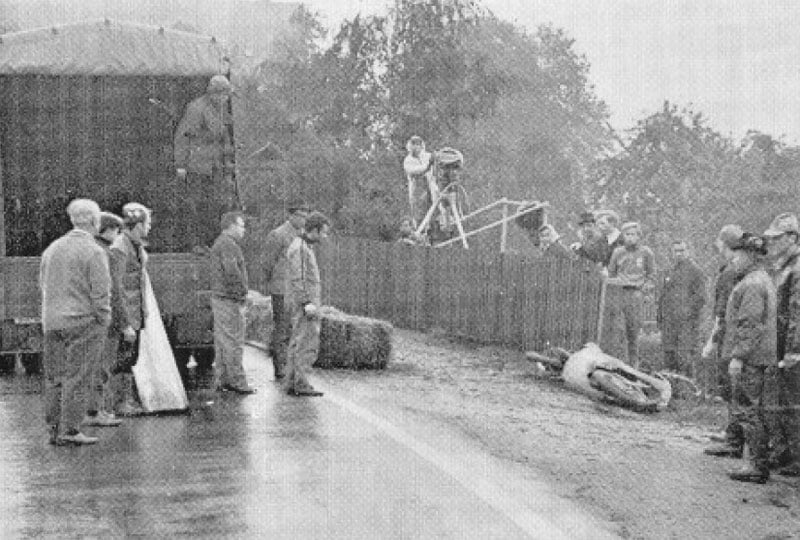
The immense popular success gradually gave rise to famously clever ways of watching the races despite the crowds...
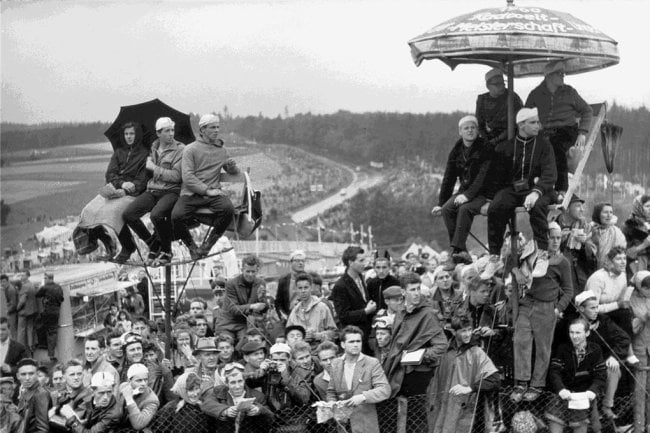
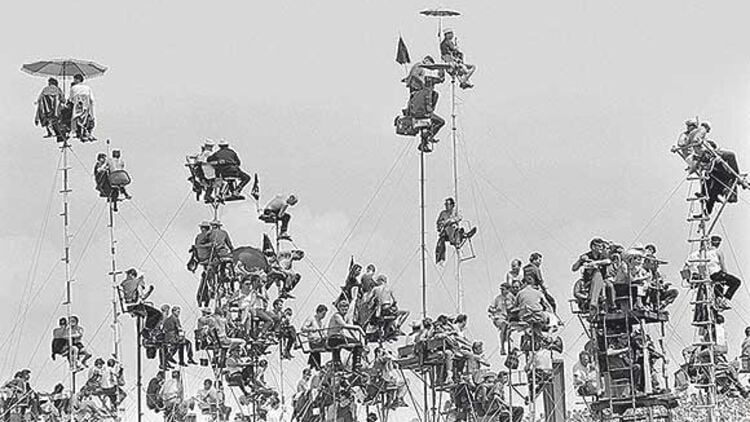
In the 1970s, things got worse because local machines and pilots were now overtaken by competitors from the Western world. In 1971, we reached the critical point when the West German Dieter Braun won the 250cc race in 1971: as a sign of protest against the conditions prevailing in the country, someone cut off the loudspeakers broadcasting the DDR national anthem and the crowd sang the Deutschland über Alles !
This obviously greatly displeased the East German communist authorities who immediately withdrew the “Gross Prize of the DDR” from the world championship…
The Großer Preis der DDR then Großer Preis des ADMV der DDR thus survived with events reserved for drivers from the Eastern States until 1990, the year when three fatal accidents occurred and caused the closure of the old circuit.
After the reunification of Germany (October 3, 1990), it would be necessary to wait another six years before the new circuit, laid out on the site of the previous one, hosted the Sachsenring-Rennen Internationals, then another two years for the Grand Prix of Germany counting again for the world championship definitely takes place on the current Sachsenring circuit.
Note its location on either side of the old route, with a common straight line and starting line. The “waterfall” added later is the only one located inside the old route.
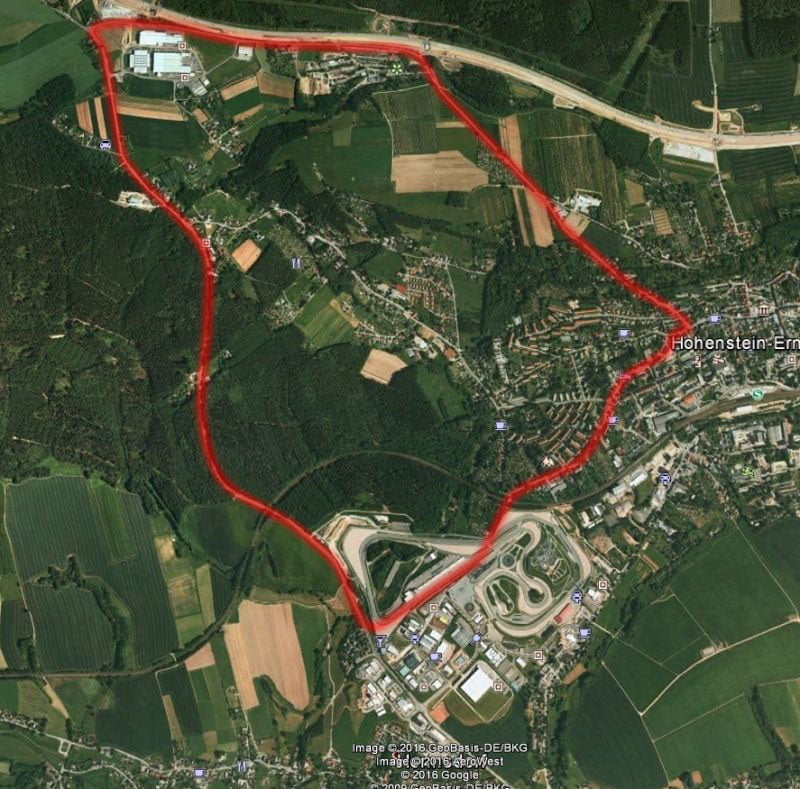
In the meantime, the Saxony circuit opened in 1995 as a driver training center by ADAC Sachsen had been expanded, its direction of rotation changed, its pit lane changed to the opposite side of a lengthened main straight in 1998 , and a few relaxed bends to be approved by the FIM.
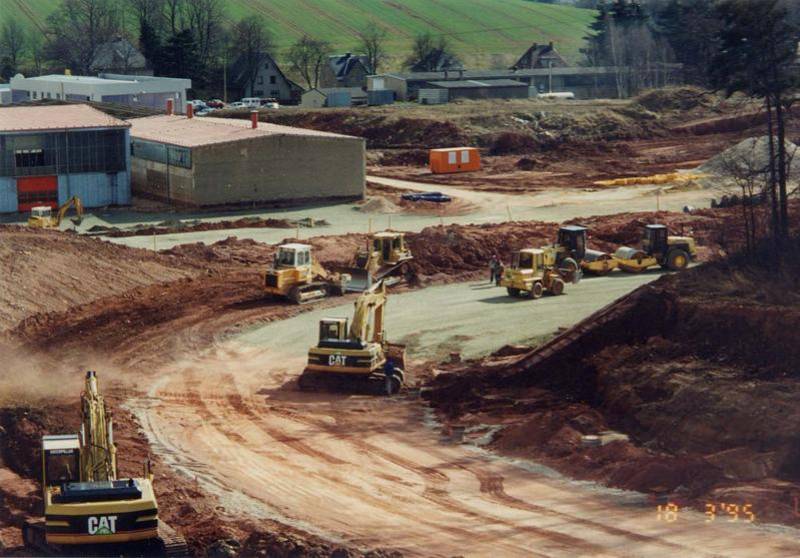
142 spectators will welcome this new formula.
Further changes came in 2000, when the chicane leading to the original section of the road course was removed. The circuit authorities were still not entirely satisfied and further major changes took place before the 2001 season, when a new final section was developed by Hermann Tilke, as well as the realignment of the pit straight, with new boxes and a paddock created inside the new loop.
Tilke's improvements included a spectacular right-hand descent plunging towards the new section, which quickly acquired the nickname "The Waterfall". These changes also mean the circuit is completely closed for the first time, becoming a truly permanent facility separated from any public roads.
For the record, the old control tower dating from 1960 had to be removed during the first major renovation of the course in 1997 in preparation for the World Championship.
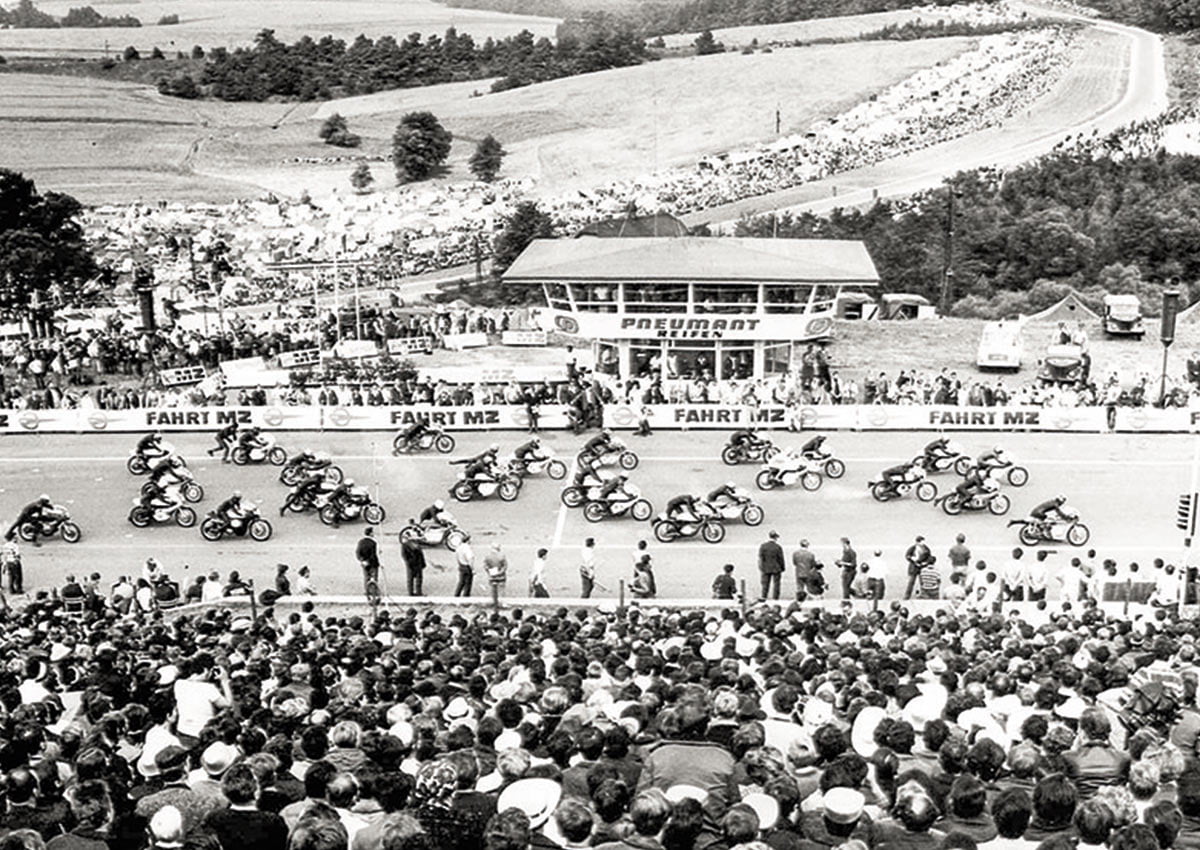
First dismantled, then stored for about a year and rebuilt about 200 m from the original, it is still part of the landscape today, outside the final bend.
